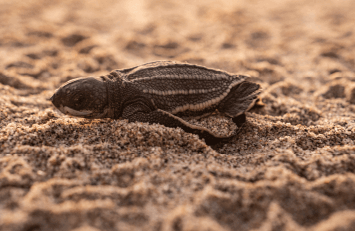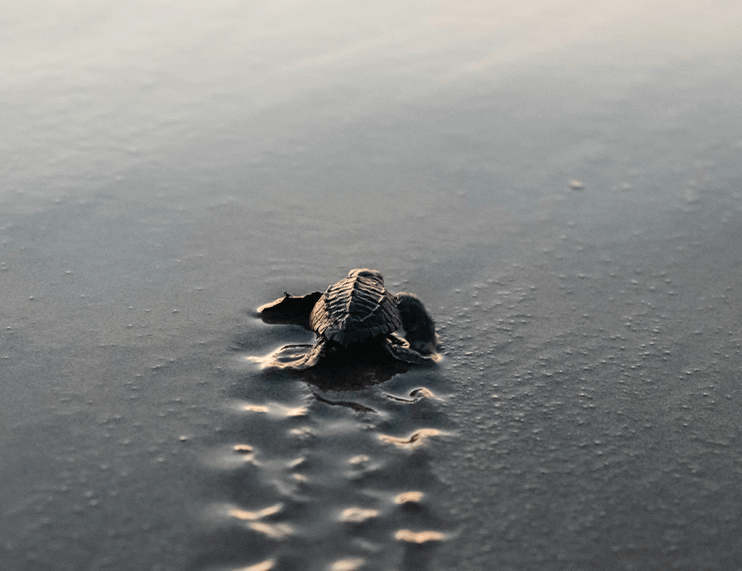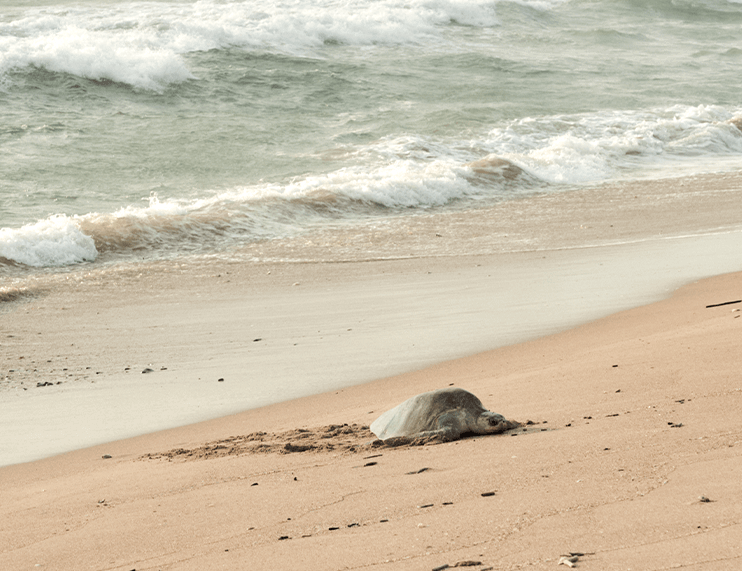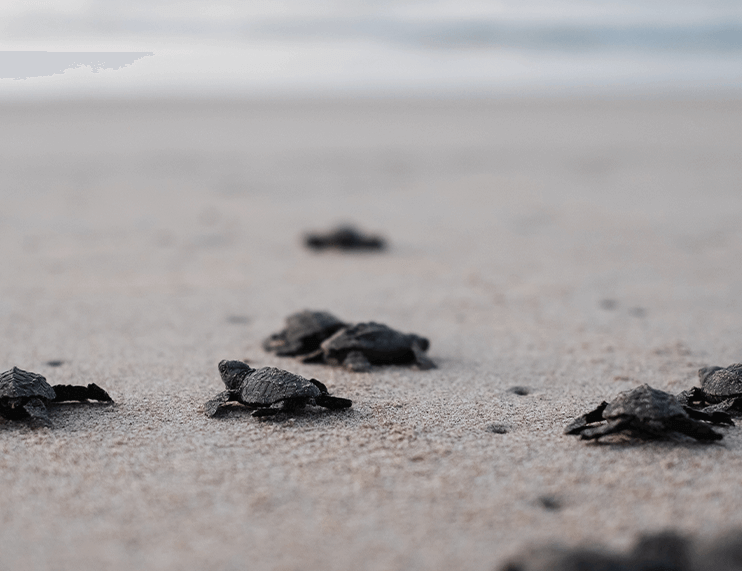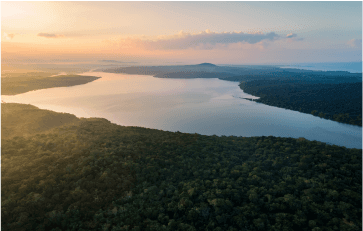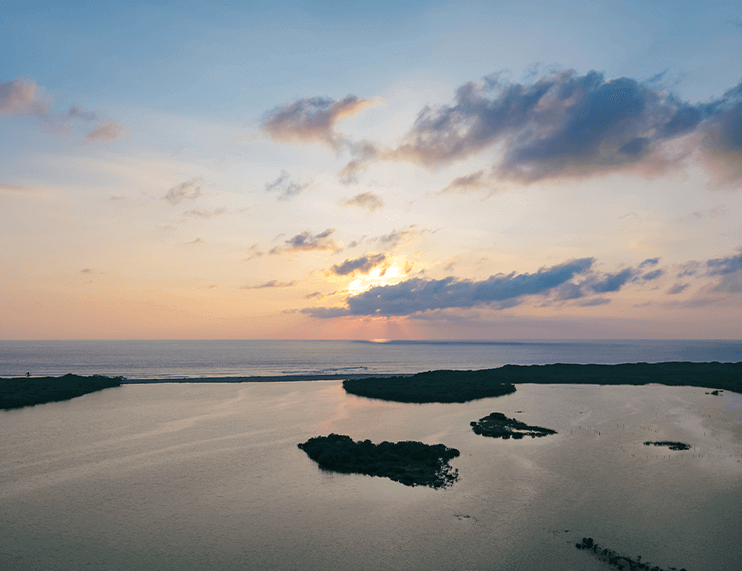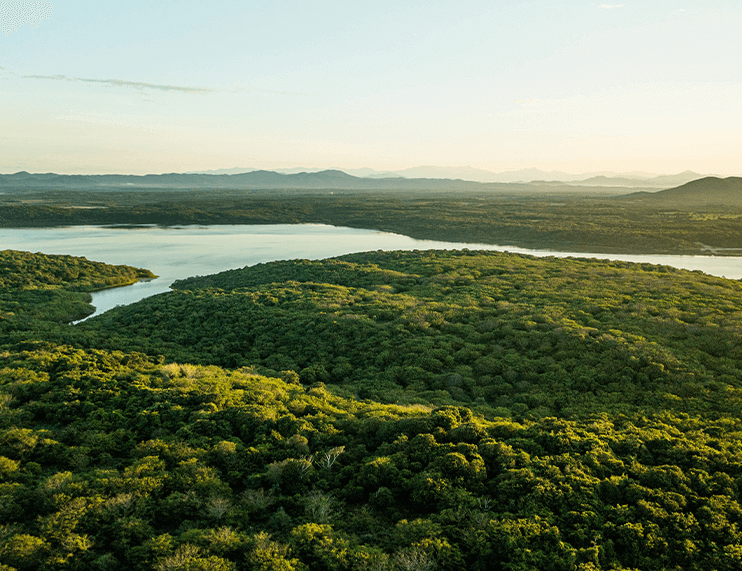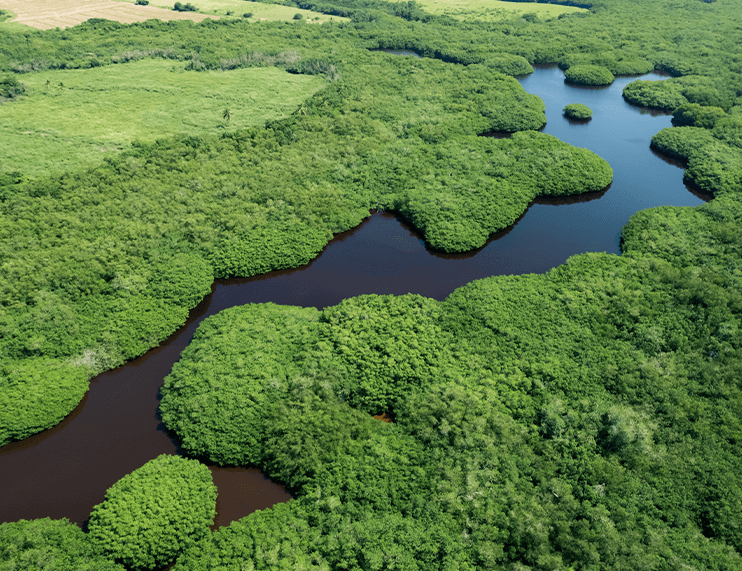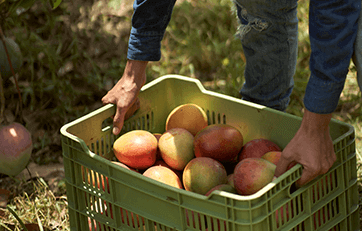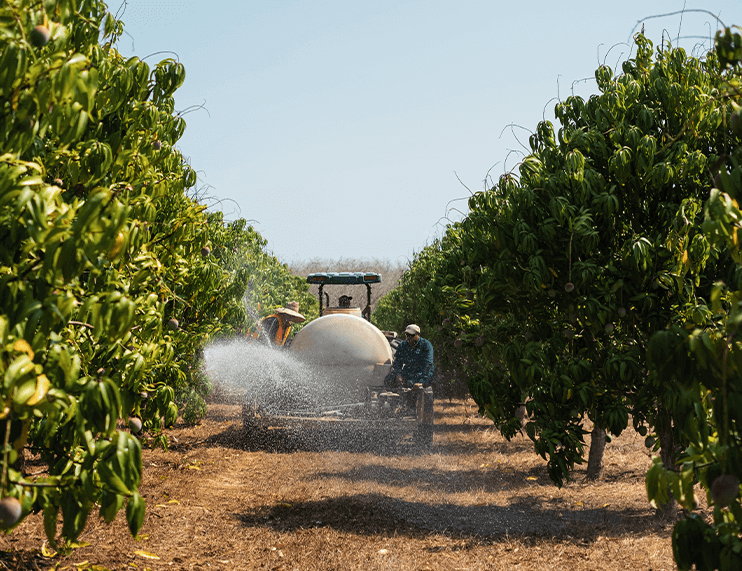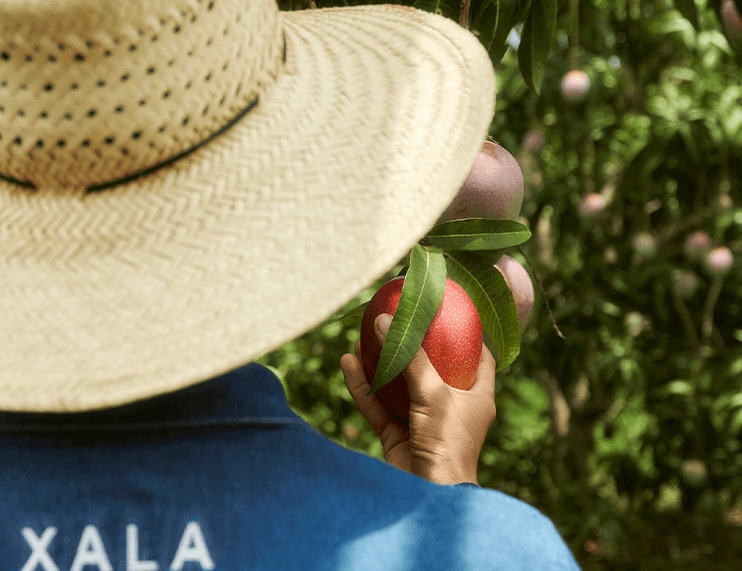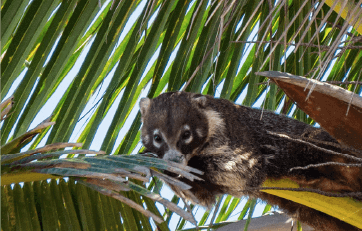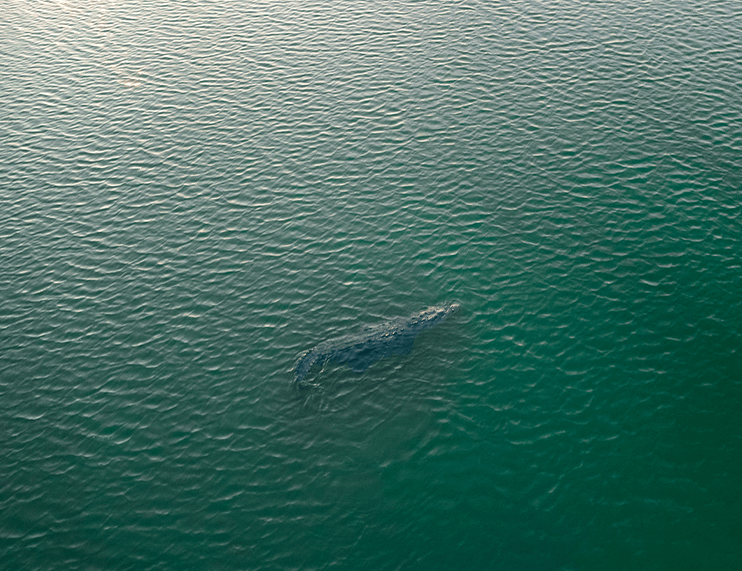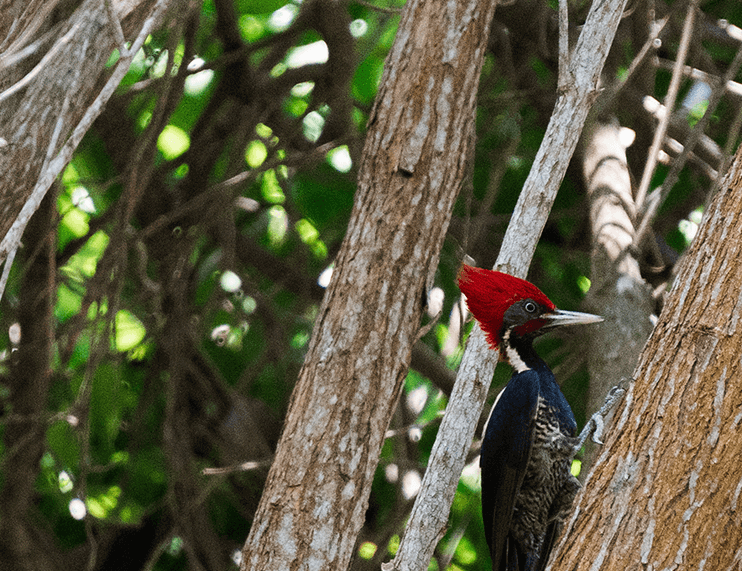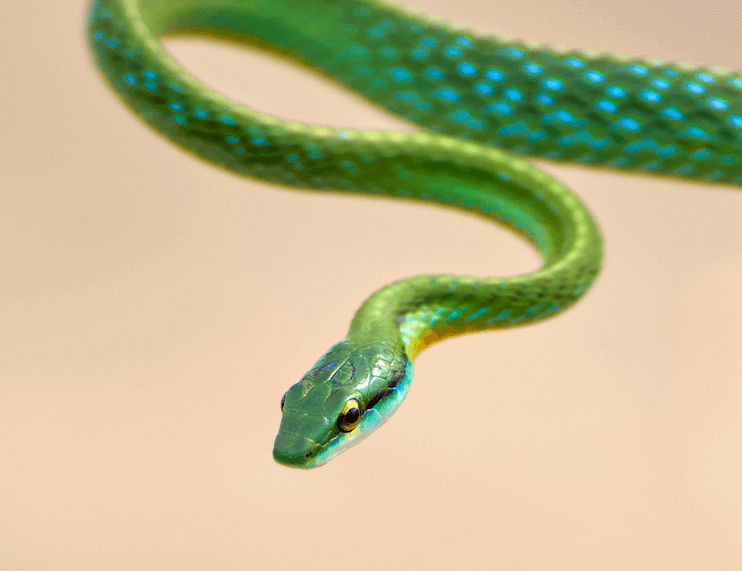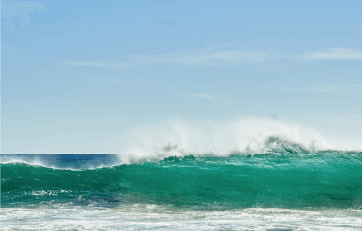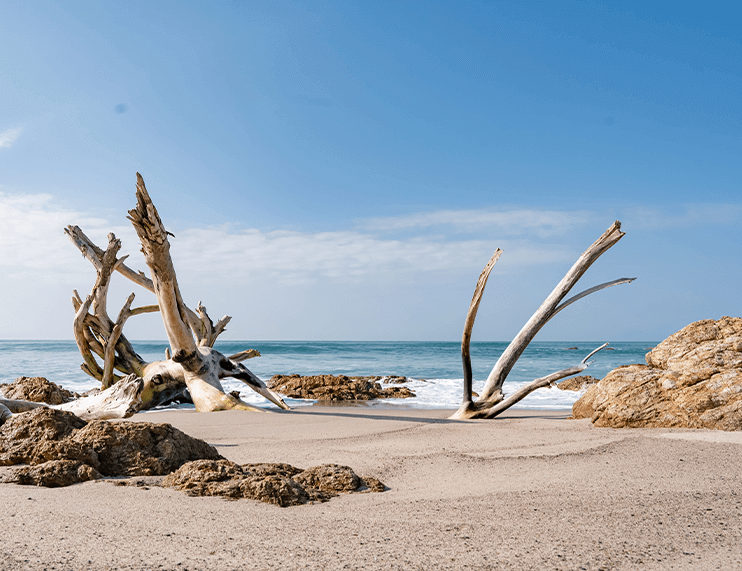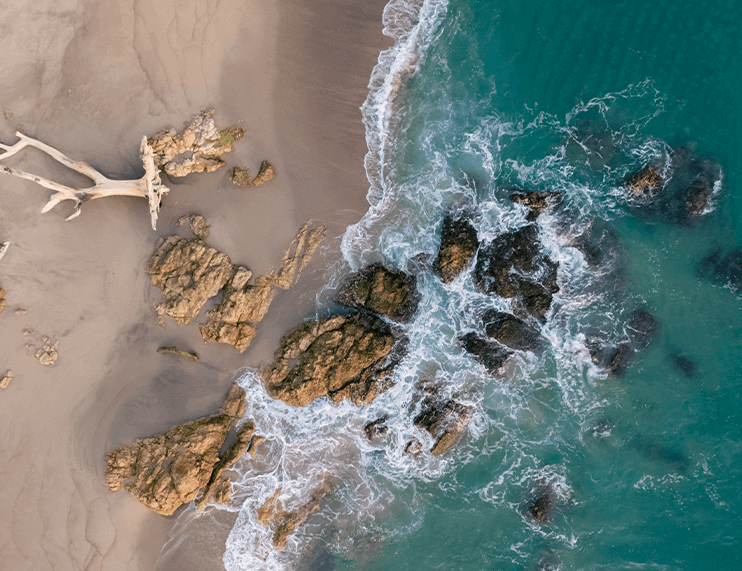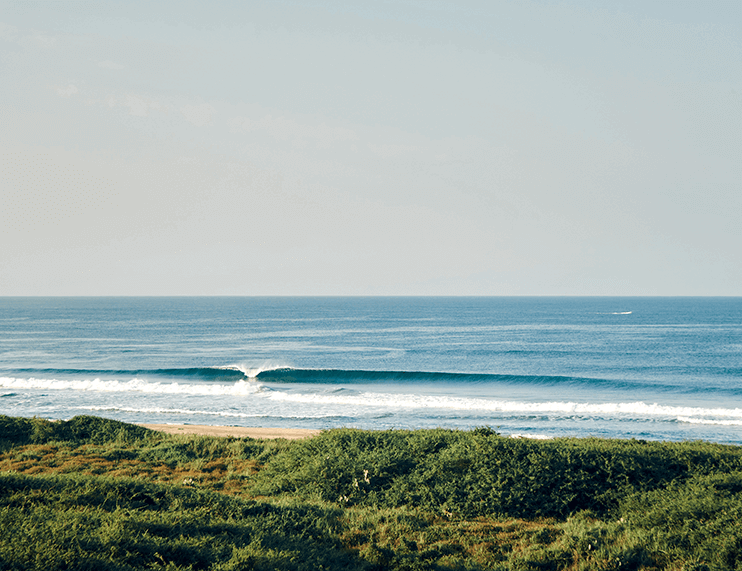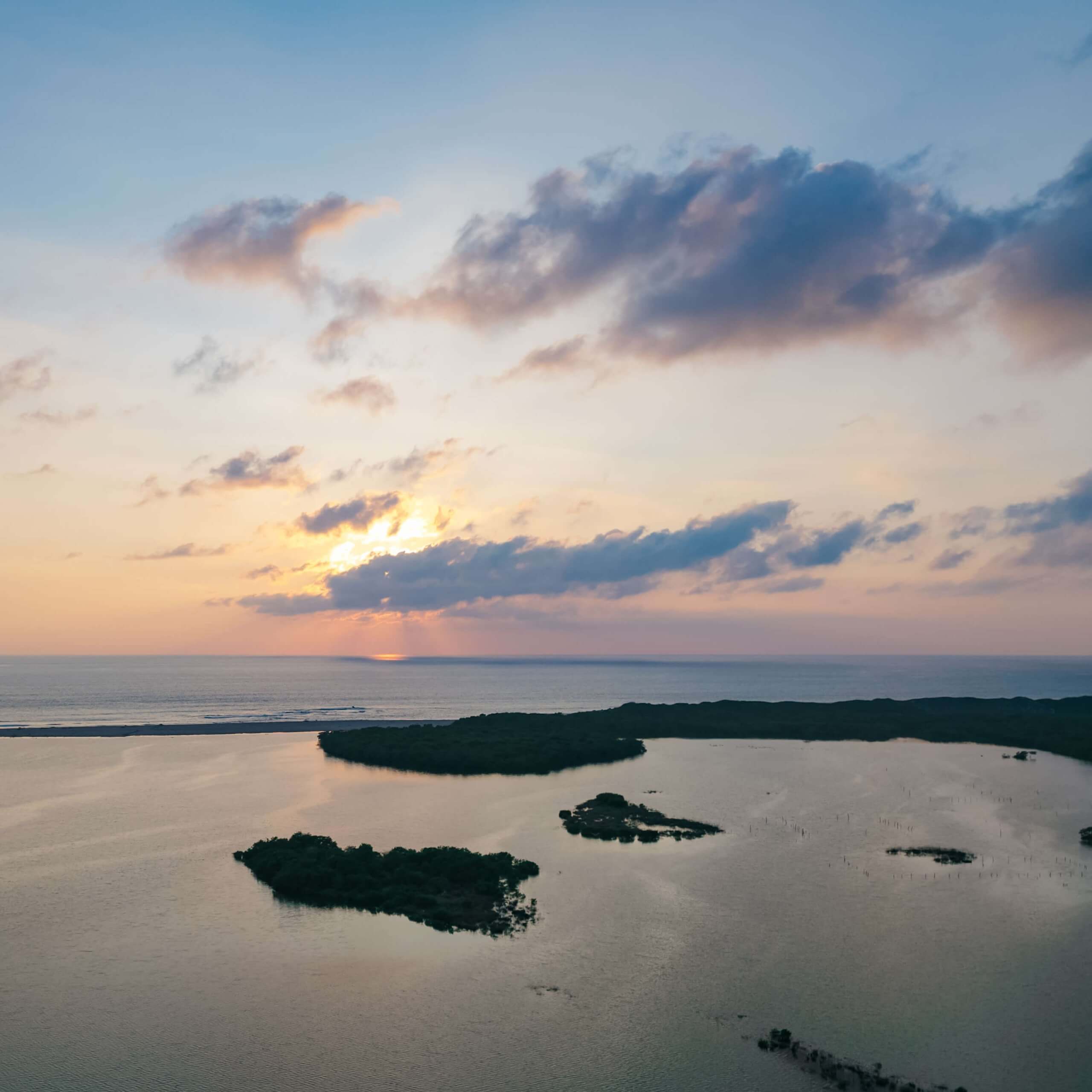Xala is situated in a spectacular natural setting, home to protected wildlife, mangrove forests, and fertile farmland. As a sanctuary for endangered sea turtles and endemic species, Xala takes an active role in conservation efforts. By fostering connections between nature, community, and guests, Xala aims to nurture the surrounding ecosystems and share the beauty of this diverse landscape in a thoughtful, regenerative way.
TURTLE CAMP
Xala’s turtle camp, Campamento Tortuguero de Chalacatepec, is a project in operation since 1992 by the National Commission of Natural Protected Areas (CONANP).
Three species of turtles call Xala ‘home.’ The Laúd, or ‘Leatherback’ sea turtle, is the largest living sea turtle and most at risk of extinction. Golfina, also known as ‘Olive Ridley,’ is the second smallest sea turtle. Prieta, or ‘Green’ sea turtle, is also a protected species at risk of extinction.
The goal is to ensure safe conditions for mother turtles to nest and nurture their hatchlings until they can return to the ocean.
In 2022, these safe passageways helped to liberate over 530 thousand turtles. Xala will always be a nurturing home for all that pass through, especially our wildlife.
ESTUARY & MANGROVES
This is nature’s purest form – where birds soar freely over freshwaters, salt flatlands and sprawling vegetation, home to thriving wildlife. We accept responsibility for protecting this ecosystem and proactively encourage life within it.
In collaboration with the Jalisco government and local communities, we are actively working on recovering the two Ramsar sites near Xala, the Chalacatepec and Xola-Paramán estuaries, considered of international importance to UNESCO.
Xala fully supports the Ramsar Convention, which holds great significance in fostering and upholding an international network of wetlands that play a crucial role in conserving global biological diversity and sustaining human life by preserving these ecosystems’ essential components, processes, and benefits.
Xala’s ecosystem plays a vital role as it can remove carbon dioxide from the air, store it for the long term, and serves as a habitat for precious wildlife. Recognizing its significance, Xala safeguards this ecosystem, contributing to the overall vitality of the land.
WILDLIFE
Wandering around, day or night, a powerful, unique, and primitive experience awaits you, where you can see a large variety of native creatures in this tropical region of Jalisco. While staying at a distance, photographers must keep their cameras ready to capture this incredible wildlife in their undisturbed, natural habitat.
Remember to pack your binoculars and field guide; Xala is a bird watchers’ dream with 3,243 birds to spy, from grand hawks to sandpipers.
In this lush region, you’ll discover a variety of over 300 reptiles and 159 amphibians recorded, including an abundance of iguanas lounging on branches, lizards scurrying along the undergrowth, and diverse tree frogs you’ll hear before you see.
Over 560 animals inhabit this vast land, including the playful but nocturnal wildcats and undomesticated rabbits.
OCEAN CONSERVATION
We work tirelessly to mitigate risks by managing runoff and pollution, prohibiting the use of damaging fishing methods, and establishing protected areas.
Fishing shelters, artificial reefs, and our beach recovery and coral restoration programs protect fishing habitats and coastal infrastructures, maintaining the perfect conditions for native sea turtles and mangroves.
Implementing mariculture projects and consistent monitoring help ensure that marine restoration remains a priority at Xala.
AGRICULTURE
Our food philosophy encourages farm-to-table eating – where ingredients like our delicious certified organic, sustainably-sourced mangos support the environment and local communities.
Xala’s organic farm, Xala Farms, aims to produce wholesome, environmentally friendly, sustainable food.
Before planting began, we prepared the land, which required complete restoration. We plant and harvest with techniques designed to promote regeneration. Seeds are brought in from other locations, ensuring the following plant generations can adapt to the soil type, salinity, and climate. Additionally, local pollinators like bees, hummingbirds, and bats help the vegetation reproduce naturally.
The wind is one of the region’s key benefits since it lowers the humidity in the air and keeps pests from appearing in the fields. By doing this, we continue to manage our farms organically and sustainably, maintaining and enhancing the biodiversity of the area and the soil’s health.
We have over 440 acres of mango groves growing as nature intended along the coastline under the beating sun, preserving one of the area’s most important agricultural practices.
Our two varieties of mangos include Kent, notable for its bright yellow skin and buttery texture, and Ataúlfo, the large ruby-golden mangos that fill the summer air with a warm fragrance.
Xala’s mangos are certified organic in Mexico, the United States, and Canada and retain a Global G.A.P. certification for food safety. These orchard treasures are also more vibrant in taste and color due to the hours of sunlight exposure and the added benefit of salt from the ocean.
Our journey to export our delicious mangos and other agricultural produce and share these rare flavors with the world is just beginning.

